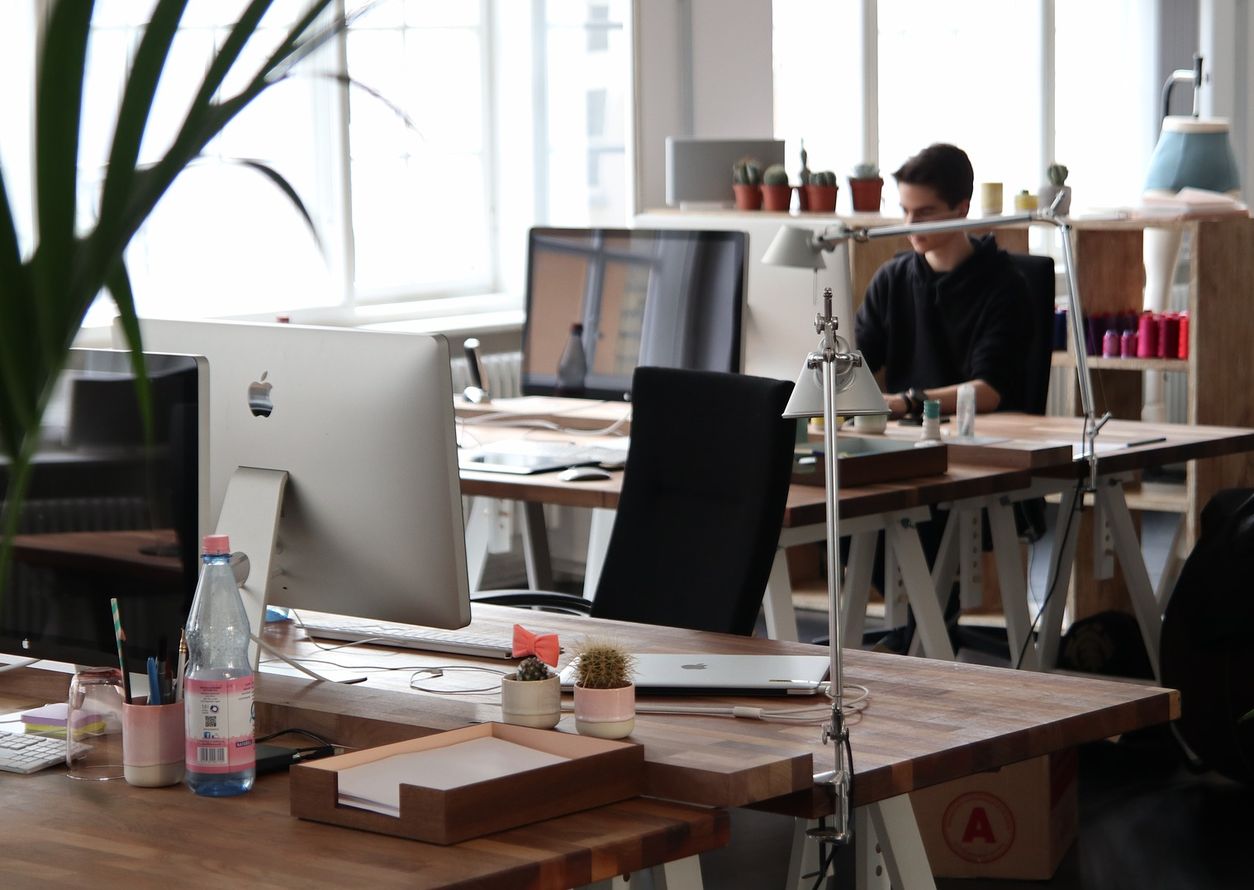Can workspaces become agile?
Innovating, adapting ever-more rapidly to changes in the environment. Breaking away from the traditional office. The digital revolution has dramatically changed working methods, and with them, the way we organize space. Researchers from Institut Mines-Télécom Business School and IMT Atlantique have studied the paradoxes and tensions that arise when workspaces are designed to embody, promote and foster agility.
In recent years, the quest for agility has pushed companies to completely rethink their organization, methods and processes. They have urged their employees to develop new work practices. These changes often go hand-in-hand with a reconfiguration of spaces: the flexible office, digital workspaces that are modular and open, organized by work activity etc. But a sort of ambivalence can be seen behind these efforts.
“Spaces, locations and offices are often synonymous with having a sense of bearings, of longevity, as a specific territory we claim as the base for our work. Agility, on the other hand, encourages continual reconfiguration, a transitory organization, keeping bodies and heads in constant motion,” explains Marie Bia Figueiredo, a management researcher at Institut Mines-Télécom Business School. So what’s work life like when the office is designed to embody and foster organizational agility? How do employees experience this apparent contradiction and make these new workspaces their own? Marie Bia Figueiredo and her fellow researchers at Institut Mines-Télécom Business School and IMT Atlantique set out to explore these issues.
“These questions first occurred to us in 2016, at an observation day in the new offices of a major French bank which we called ‘The Oases’“, says Madeleine Besson, who is also a researcher in management at Mines-Télécom Business School. “We were struck by the omnipresence of references to agility in the talks presenting the buildings, in the way the space was designed, in the signage and even in the decorative elements. On one hand, companies have always relied on physical spaces to convey and embody the changes they hope to bring about in order to standardize and organize practices and behaviors. But at the same time, we must remember that the agile movement establishes a principle of autonomy and self-organization for teams. There was a certain dissonance to it.”
From agile methods to agile environment
The agile movement was formally established in the early 2000s with the aim of adapting quickly to change, whether in terms of disruptive technologies, the volatility of customers or regulatory developments. This quest for agility was first expressed through new project management methods, collectively referred to as “agile methods”. In principle, these methods are based on a willingness to accept risk and change and on reorganizing and adapting to such change on a permanent basis. Today, companies increasingly see the workspace as a vehicle for change and agility. “Organizations are seeking to align space, work and information technologies,” explain the Institut Mines-Télécom Business School researchers in a forthcoming publication in Terminal[1].
The “Oases” created by the French bank observed by the researchers exemplify this trend. They were designed to embody an “exceptional” drive for transformation in a banking sector which has been particularly affected by technological and economic transformations. During the researchers’ investigation, the company’s real estate director explained their motivation for creating such spaces, “We wanted the Oases to provide fertile grounds for new ways of working in an effort to attract new talents.” The decision was inspired by the iconic workspaces of companies such as Google or Apple, which can “create well-being and conditions that allow employees to work differently.”
The research team’s study shows how this requirement for agility in the corporate world is expressed –in particular through a requirement for adaptation and ubiquity. In order to preserve their modularity, the workspaces cannot be personalized. Instead, workspaces are reserved when arriving at the office and rolling chairs and height-adjustable tables ensure that the space and office can constantly be rearranged. Work is primarily coordinated in the digital space and collective work has become invisible. Physical space and digital space are closely interlinked to convey a requirement for ubiquity.
The researchers also note a requirement for creativity and happiness. “The environment is decorated with plastic smiley faces. The office is designed to provide a fun environment where employees are encouraged to play ping pong or pool,” they note. Lastly, a requirement for speed is expressed by the pervasiveness of references to the passage of time. Hourglasses of varying sizes serve as reminders that there is no leeway when it comes to projects being completed on schedule. “Agility claims to prioritize individual interactions above processes and tools, but these interactions are still subject to strong time pressure. And agility means working at a faster pace, since you have to be ready to cancel or repeat operations as required by customers, the context or new developments,” points out Géraldine Guérillot, a researcher from the IMT Atlantique team.
Attempts to make a “non-place” one’s own
How do employees perceive these changes? Some find it difficult to break with their previous work habits. “Many of them told us that senior executives had to set an example by using the game room or nap room before the employees dared to use it,” says Jean-Luc Moriceau, a researcher at Institut Mines-Télécom Business School. “Others, without showing strong opposition to the new working methods, find ways to get around them. This can be seen in teams who regularly meet up to ‘recreate their territory’ or high-level managers who reserve a room for an entire day“. In some workplaces, employees leave personal belongings to (re)gain their bearings. The flex-office depersonalizes the workplace, so employees attempt to make the space their own, thereby developing behaviors that are contrary to the constant, agile reorganization of space.
Others play along. For example, one of the managers explains that for him, the hourglasses are a polite way of reminding everyone that time is tight. “He’ll meet with anyone who wants to see him, but they must present their views within the allotted time, which is physically represented by the sand flowing through the hourglass,” explain the researchers. Agility appears to aim to shake up the work environment.
But the researchers provide a warning, “The quest for agility, embodied by the reconfiguration of space, when implemented in a too prescriptive and uniform manner, can lead to producing ‘non-places’. These spaces deny the role that feelings, territories, memory and status play in the operations of an organization and work collectives.” The researchers demonstrate how, in turn, this gives rise to discreet ways of taking ownership of such spaces and “producing places,” understood as “minor uses resulting in alternative ways of occupying the shared space.”
By Anne-Sophie Boutaud for I’MTech
[1] Moriceau J.-L., Besson M., Bia Figueiredo M., Guérillot G. (2020), L’espace agile, oasis ou mirage ? Mise en perspective de quelques difficultés et paradoxes pour les travailleurs (Agile Spaces, Oasis or Mirage? A Perspective on Difficulties and Paradoxes for Employees), Terminal, Technologie de l’Information, Culture et Société (forthcoming).




Leave a Reply
Want to join the discussion?Feel free to contribute!